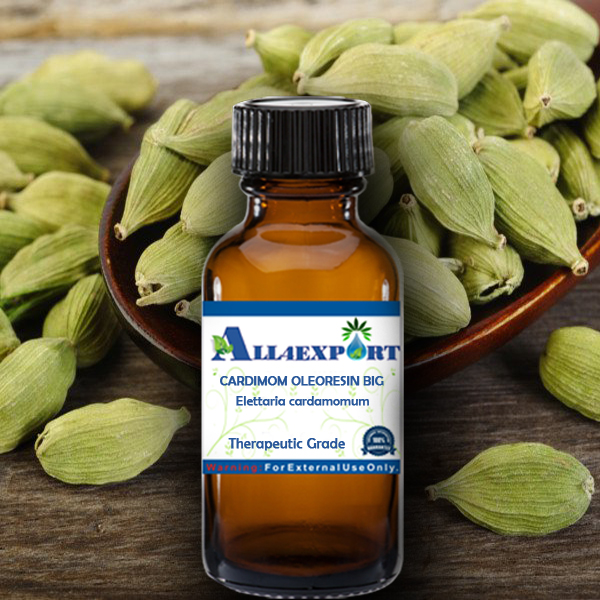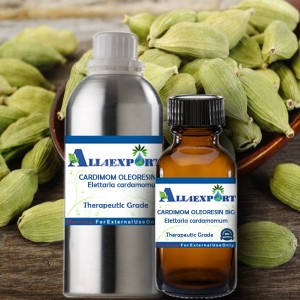| CARDIMOM OLEORESIN BIG |
Botanical Name | : | Elettaria cardamomum | Country of Origin | : | India, Nepal, Bhutan | Solubility | : | Soluble in oil, insoluble in water | Specific Gravity | : | Not Applicable | Optical Rotation | : | -17° +19° | Refrective Index | : | 1.452 - 1.979 | Plant Part | : | Seed | Blend With | : | Rose, Orange, Bergamot, Cinnamon Bark, Clove Bud, Caraway and Cedarwood. | CAS No | : | 96507-91-4 | Flash Point | : | 89° | Extraction Method | : | Steam Distilled |
|
Description : Cardamom Oleoresin is produced by steam distillation from the dried ripe fruit (pods). The dark brown oleoresin is a yellow liquid with a sweet-spicy, warming fragrance. It is non toxic in nature.
|
Constituents : Alpha Terpinyl Acetate 50%, Cineol 20%, Linalol 5%, Linalyl Acetate 4% & Limonene |
Uses : Cardamom Oleoresin is widely used as a food condiment. Cardmom oleoresin is listed in the British Herbal Pharmacopoeia as a 'specific' for flatulence and dyspepsia. It used extensively as a domestic spice, especially in India, Europe, Latin America and Middle Eastern countries. The oleoresin is employed in some carminative, stomachic and laxative preparations.
|
Benefit : Cardamom Oleoresin can be attributed to its properties like anti spasmodic, neutralizes adverse effects of chemotherapy, reduces nausea, anti septic, anti microbial, aphrodisiac, astringent, digestive, stomachic, stimulant, diuretic etc. |
Caution Note: Oleoresin is a powerful irritant, and even in minute quantities produces an intense burning sensation when it comes in contact with the eyes and tender parts of the skin.
All of the information and opinions that are provided on this web site are for informational and educational purposes only. This information is not intended to replace medical advice given by a medical practitioner. Anyone considering alternative therapies should consult with their medical professional before using an alternative method of healing. We do not give nor is any opinion on our web site medical advice.
|



